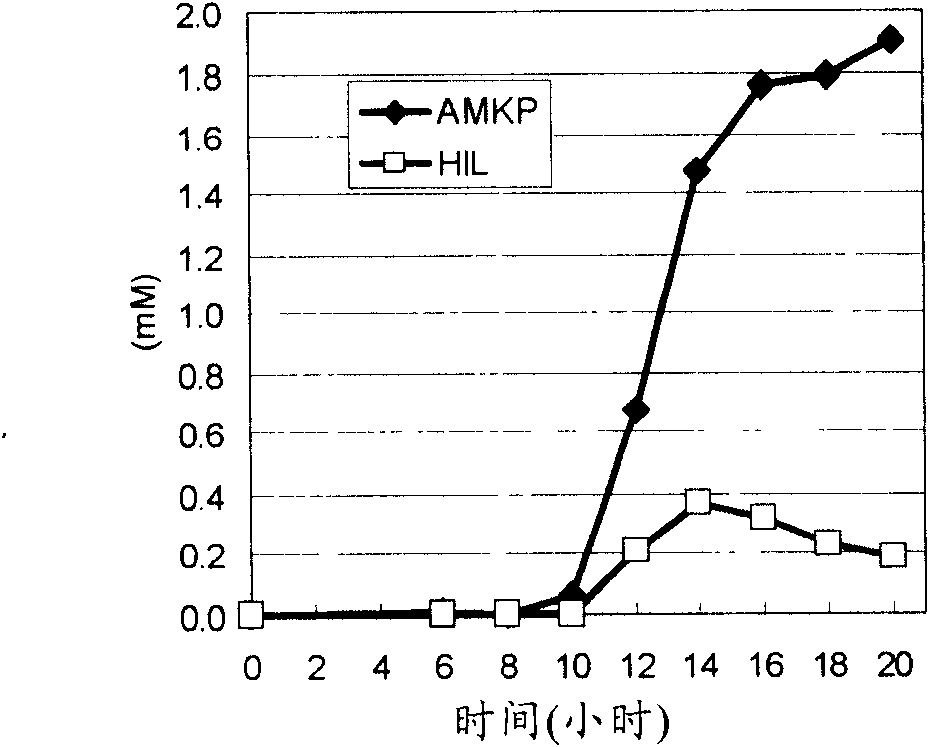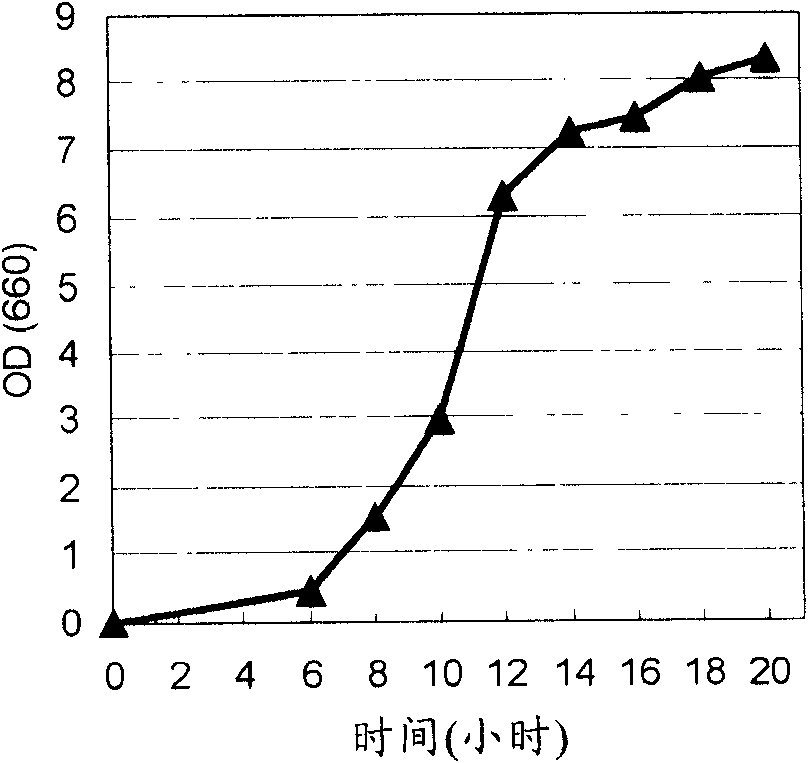Method for producing 4-hydroxy-L-isoleucine
A technology of hydroxyisoleucine and isoleucine, applied in oxidoreductase, fermentation and other directions, can solve the problem of no isoleucine hydroxylase reported
- Summary
- Abstract
- Description
- Claims
- Application Information
AI Technical Summary
Problems solved by technology
Method used
Image
Examples
specific example
[0108] Specific examples include Bacillus thuringiensis (strain 2-e-2, strain AKU 238, strain NBRC3958, strain ATCC 35646, etc.), Bacillus licheniformis (strain AKU 223, strain IAM 11054, etc.), Bacillus sphaericus (strain AKU 227, strain NBRC 3526 etc.), Bacillus cereus strain ATCC 14579 and Bacillus weideri strain KBAB4. The strain 2-e-2 was named as the AJ110584 strain, and was deposited in the independent administrative agency, National Institute of Advanced Industrial Science and Technology, International Patent Organism Depositary) (Tsukuba Central 6, 1-1, Higashi 1-Chome, Tsukuba-shi, Ibaraki-ken, 305-8566, Japan), and obtained accession number FERM BP-10688.
[0109] Among the above-mentioned microorganisms, those whose strain names start with AKU can be obtained from Laboratory of Fermentation Physiology and Applied Microbiology, Division of Applied LifeSciences, Graduate School of Agriculture, Kyoto University (Fermentation Physiology and Applied Microbiology Exp...
Embodiment 1
[0275] Example 1. Screening for strains with L-isoleucine hydroxylase
[0276] Screening of strains producing 4-hydroxyisoleucine and analysis of culture medium
[0277] The microorganisms having the ability to produce 4-hydroxyisoleucine were screened by using L-isoleucine as a substrate. In water, dissolve 0.4% (w / v) of soluble starch, 0.4% of yeast extract, 1% of malt extract (malt extract) and 0.2% of L-isoleucine, and then adjust the solution to pH7- 7.5 Obtain a medium and inoculate the medium with soil bacteria. After shaking culture at 28°C for 2 days, 4-hydroxyisoleucine was analyzed by amino acid analysis of the centrifuged supernatant.
[0278] Amino Acid Analysis Conditions
[0279] By using Waters AccQ-Tag TM method to detect 4-hydroxyisoleucine. The amino acids in 5 μl of the reaction mixture diluted to the appropriate concentration were derivatized in a conventional manner and the production of 4-hydroxyisoleucine was measured by HPLC analysis. ...
Embodiment 2
[0323] The separation and purification of embodiment 2.L-Ile hydroxylase
[0324] (1) Preparation of cell-free extract
[0325] Strain 2-e-2 was grown in a total volume of 2 L of AMKP production medium until OD 660 to 6.0, the cells were then washed with saline. The cells were suspended in a cell membrane treatment solution (10 mg / ml lysozyme (SIGMA), 5 mg / ml cellulase "ONOZUKA" R-10 (Yakult), Yatalase (Takara Bio), 1 mg / ml lysozyme (SIGMA), Soluble in 0.2M NaH 2 PO 4 and 0.6M KCl (pH5.5)), and then incubated at 30°C for 1 hour. The incubated cells were washed with physiological saline, then suspended in buffer A (50 mM HEPES (pH 7.0), 10% glycerol, 2 mM DTT, 1 mM EDTA, Complete (Roche)), and cooled with ice The cells were disrupted by using a sonicator (Branson). This treated suspension was centrifuged at 4°C and 18,500 xg for 60 minutes to obtain a supernatant. Subsequent isolation and purification steps were all carried out at 4°C or under ice-cooling condit...
PUM
| Property | Measurement | Unit |
|---|---|---|
| concentration | aaaaa | aaaaa |
Abstract
Description
Claims
Application Information
 Login to View More
Login to View More - R&D
- Intellectual Property
- Life Sciences
- Materials
- Tech Scout
- Unparalleled Data Quality
- Higher Quality Content
- 60% Fewer Hallucinations
Browse by: Latest US Patents, China's latest patents, Technical Efficacy Thesaurus, Application Domain, Technology Topic, Popular Technical Reports.
© 2025 PatSnap. All rights reserved.Legal|Privacy policy|Modern Slavery Act Transparency Statement|Sitemap|About US| Contact US: help@patsnap.com



